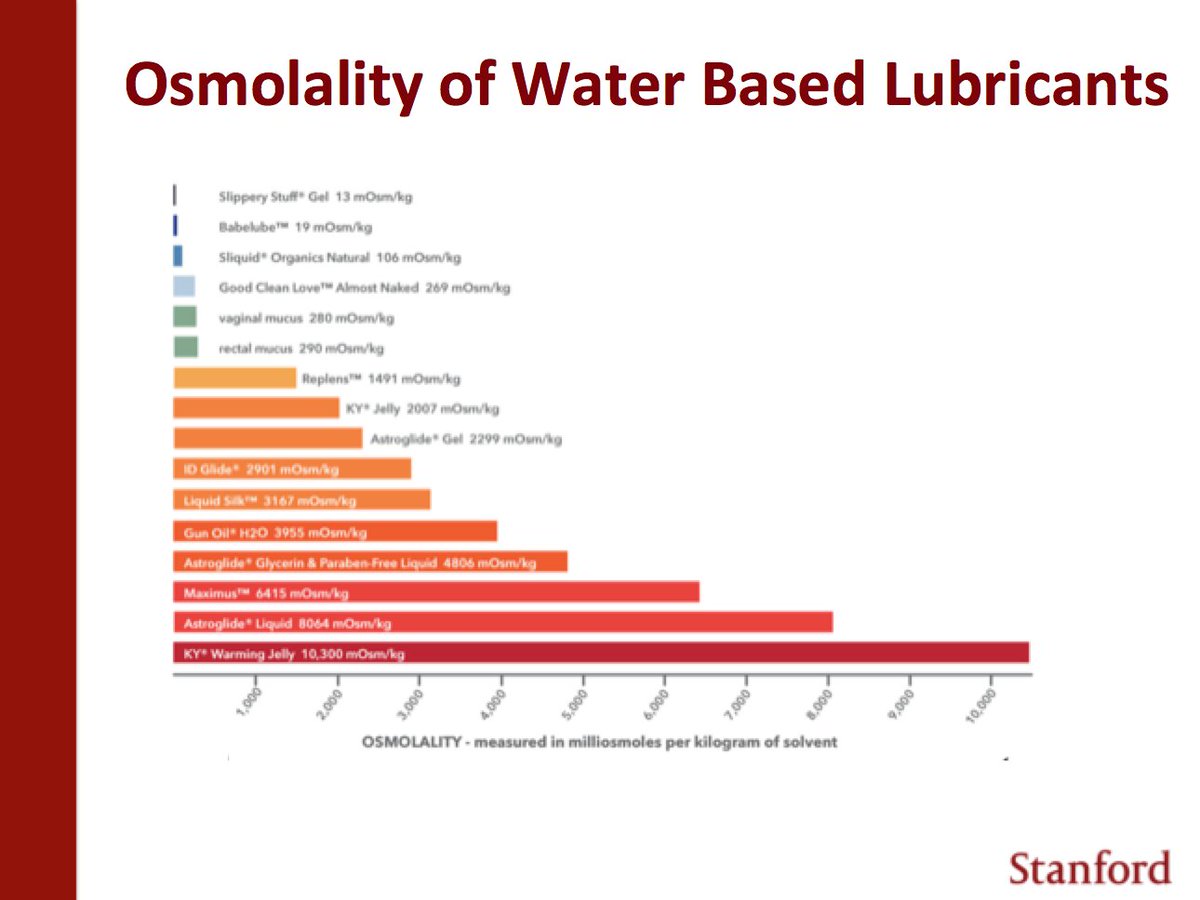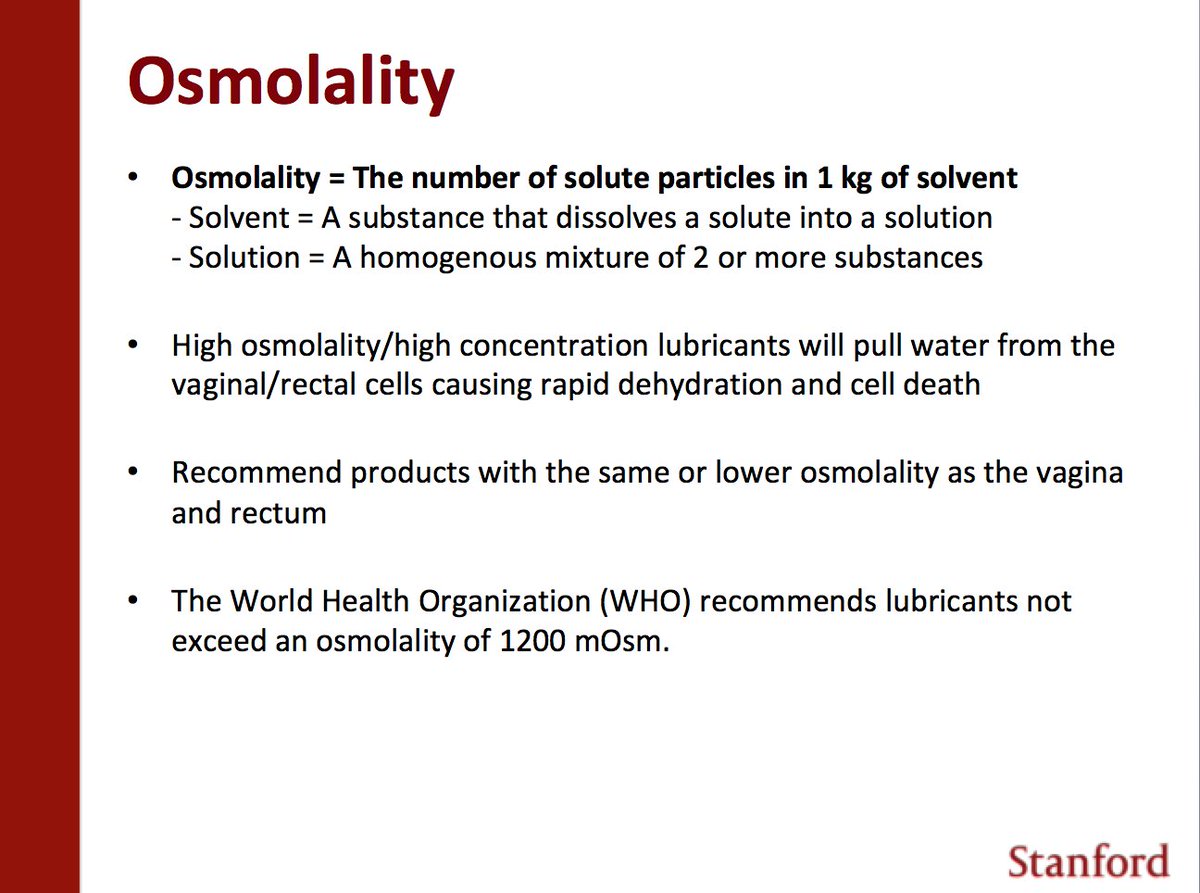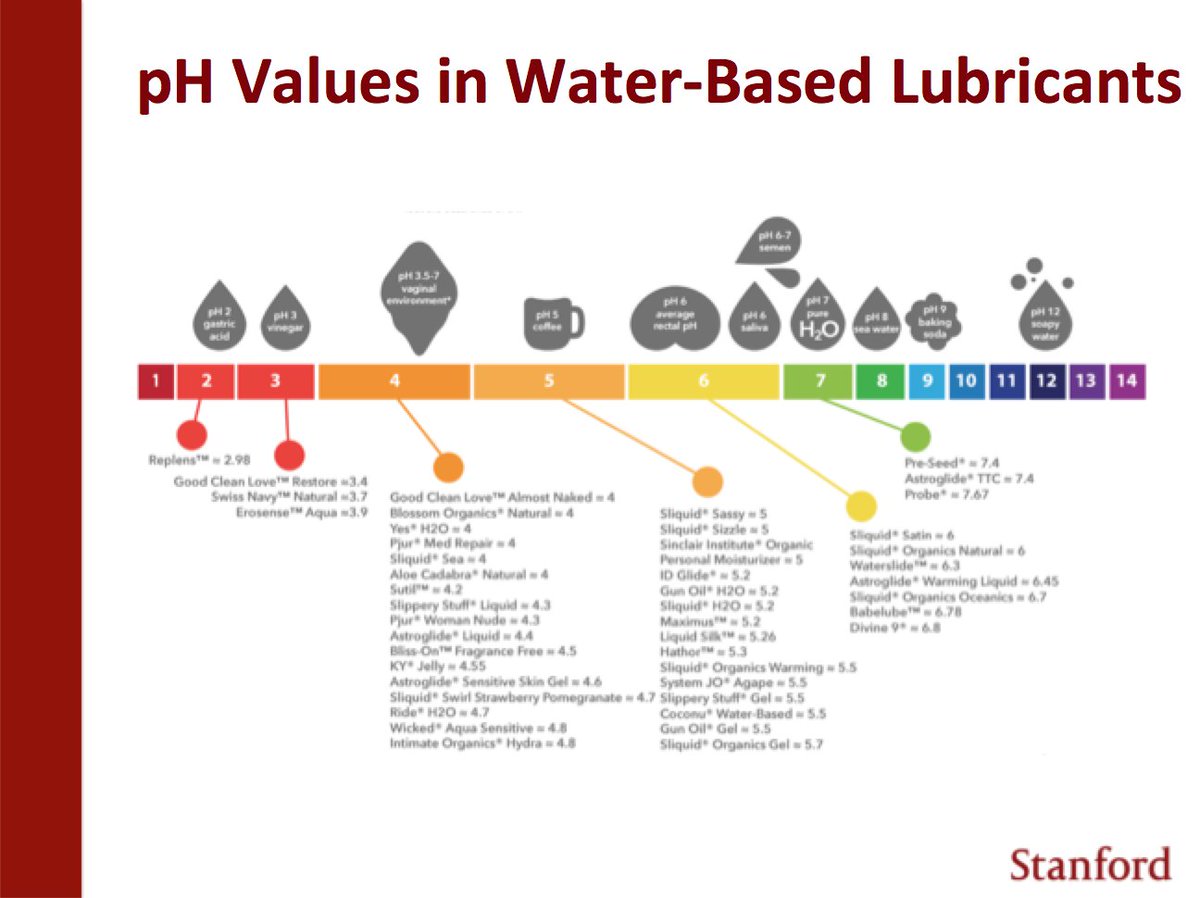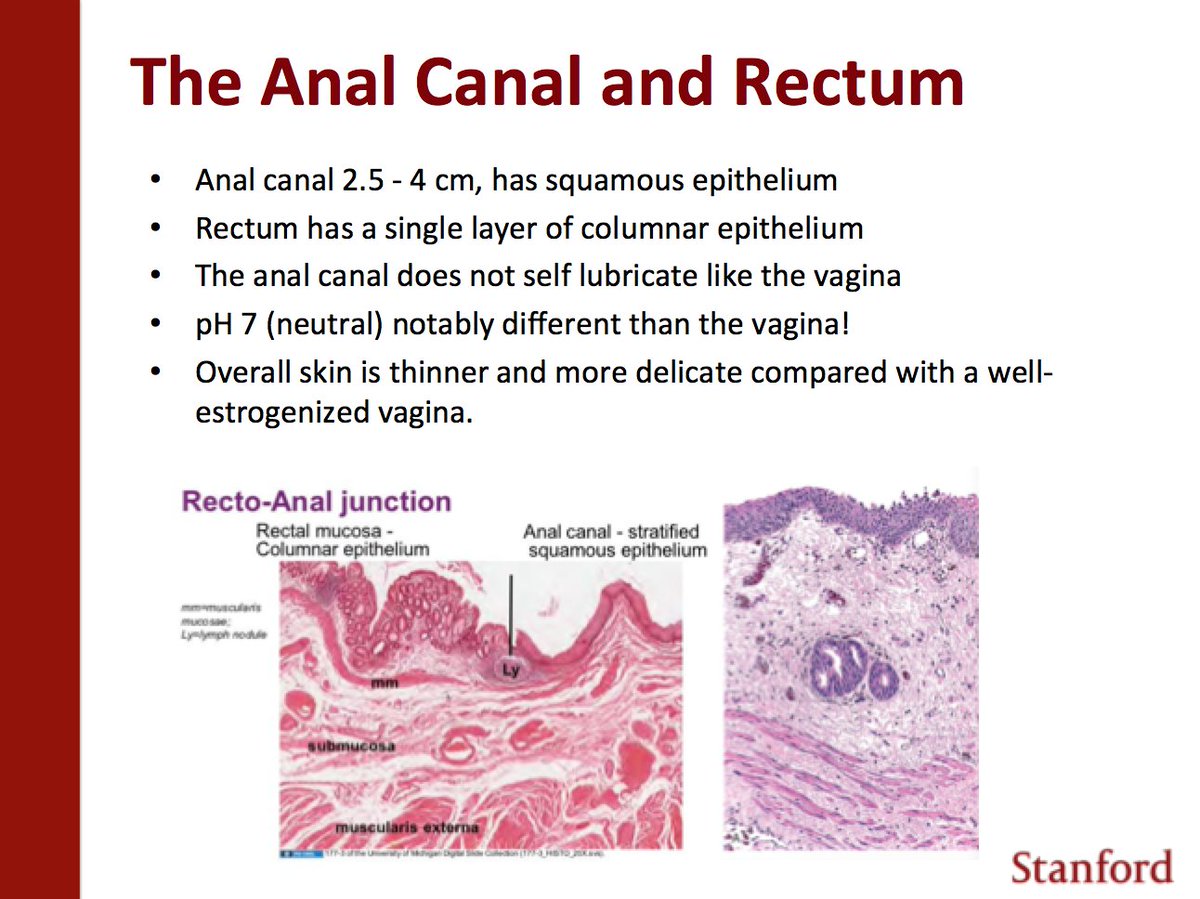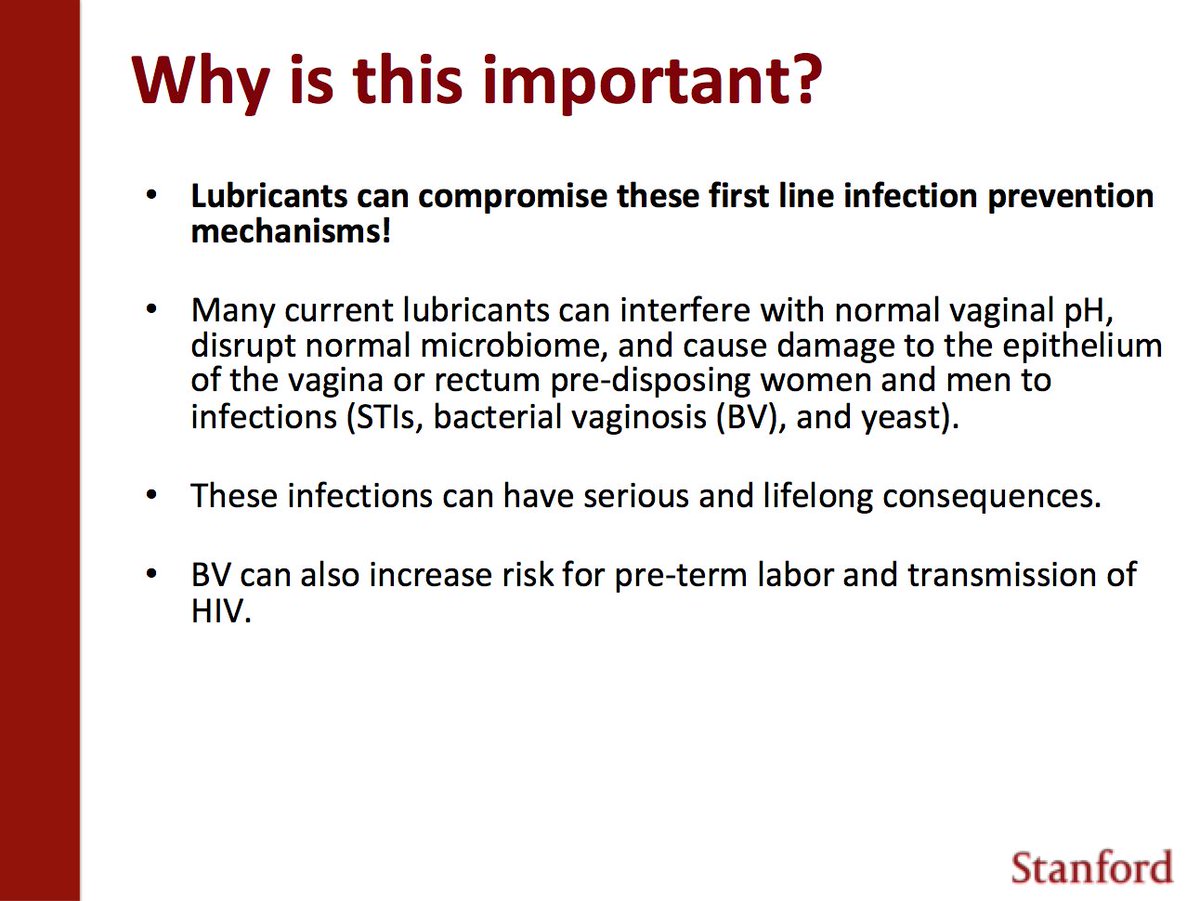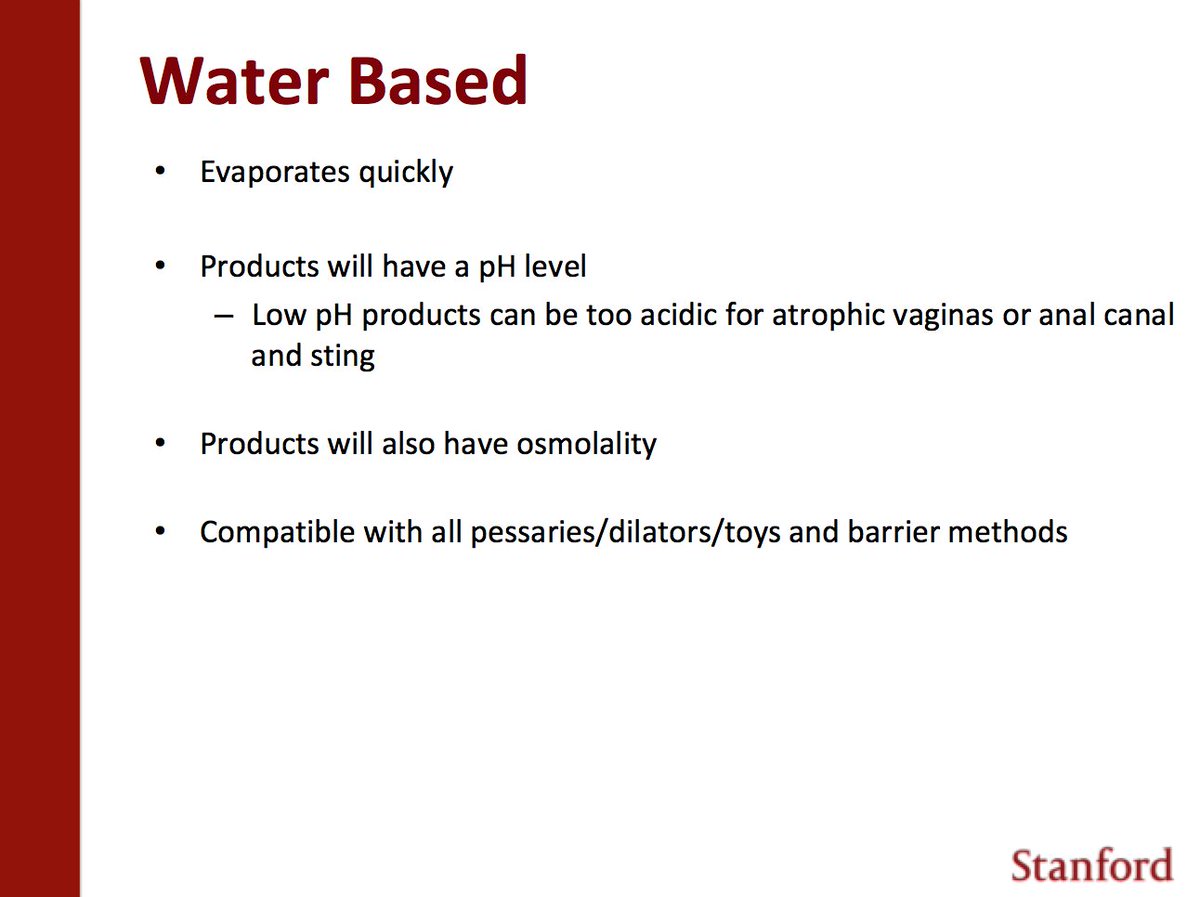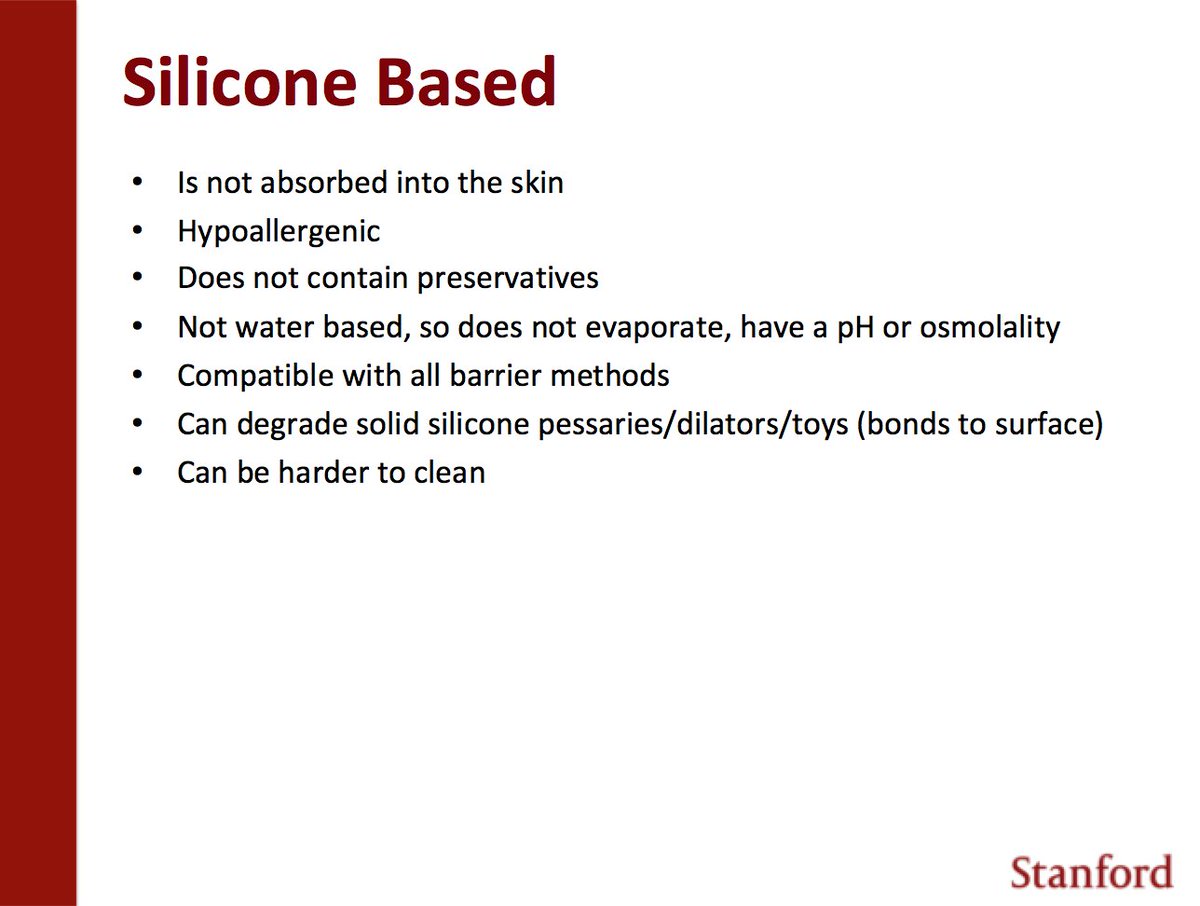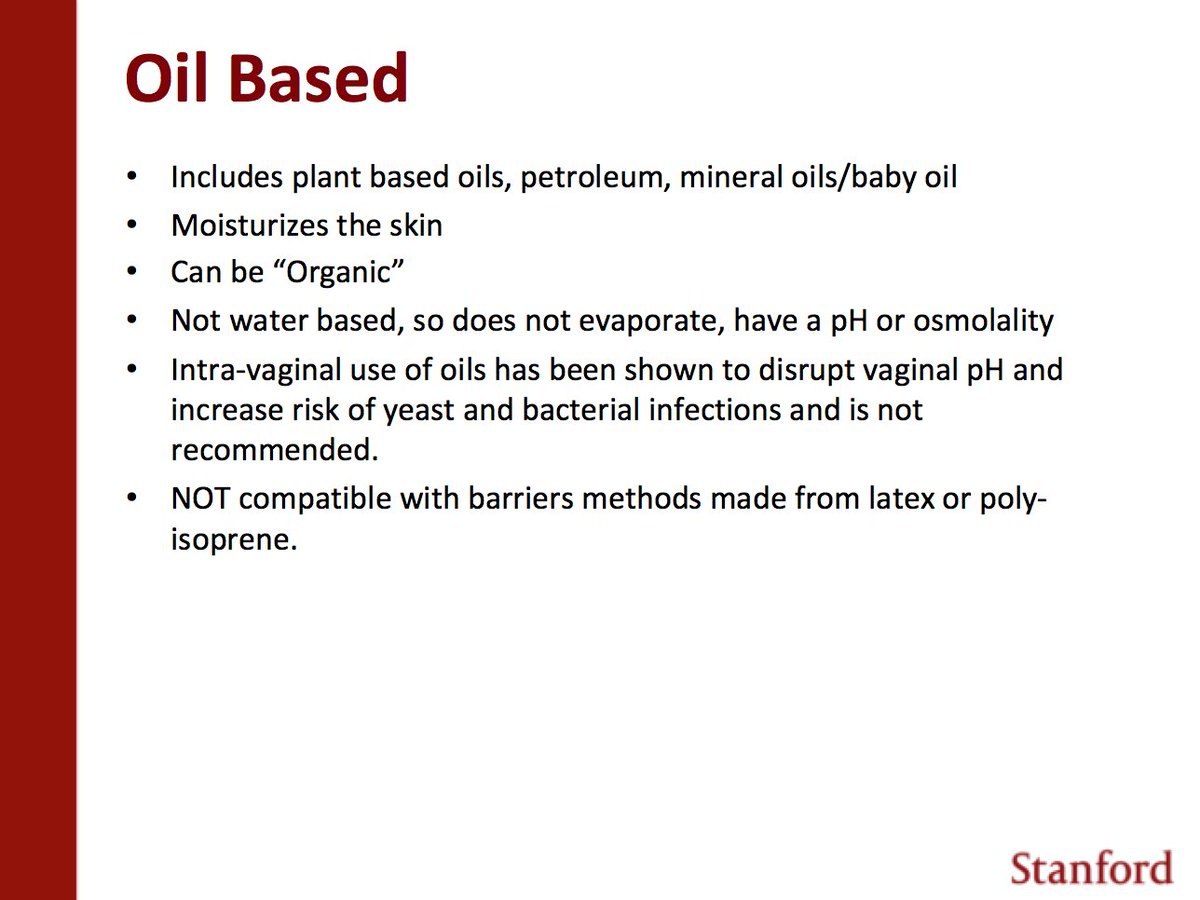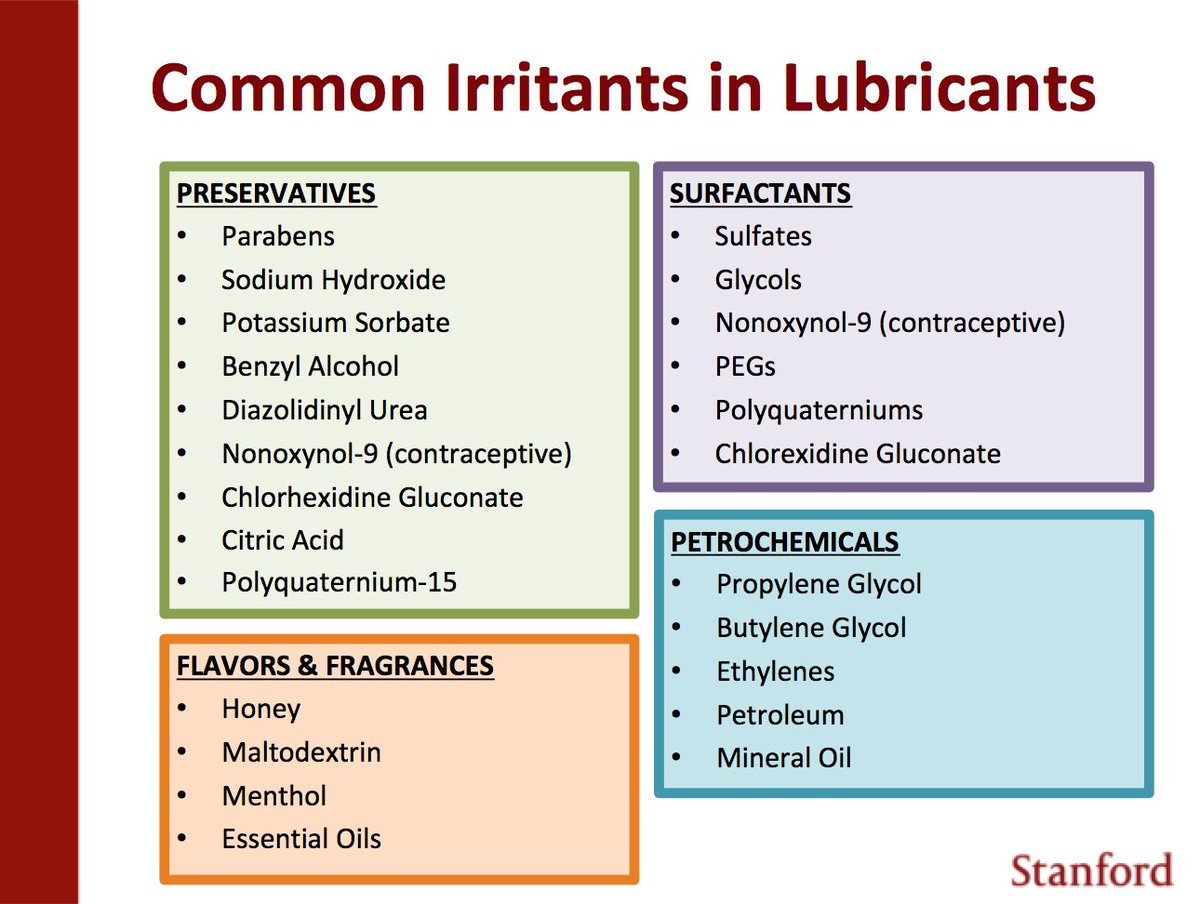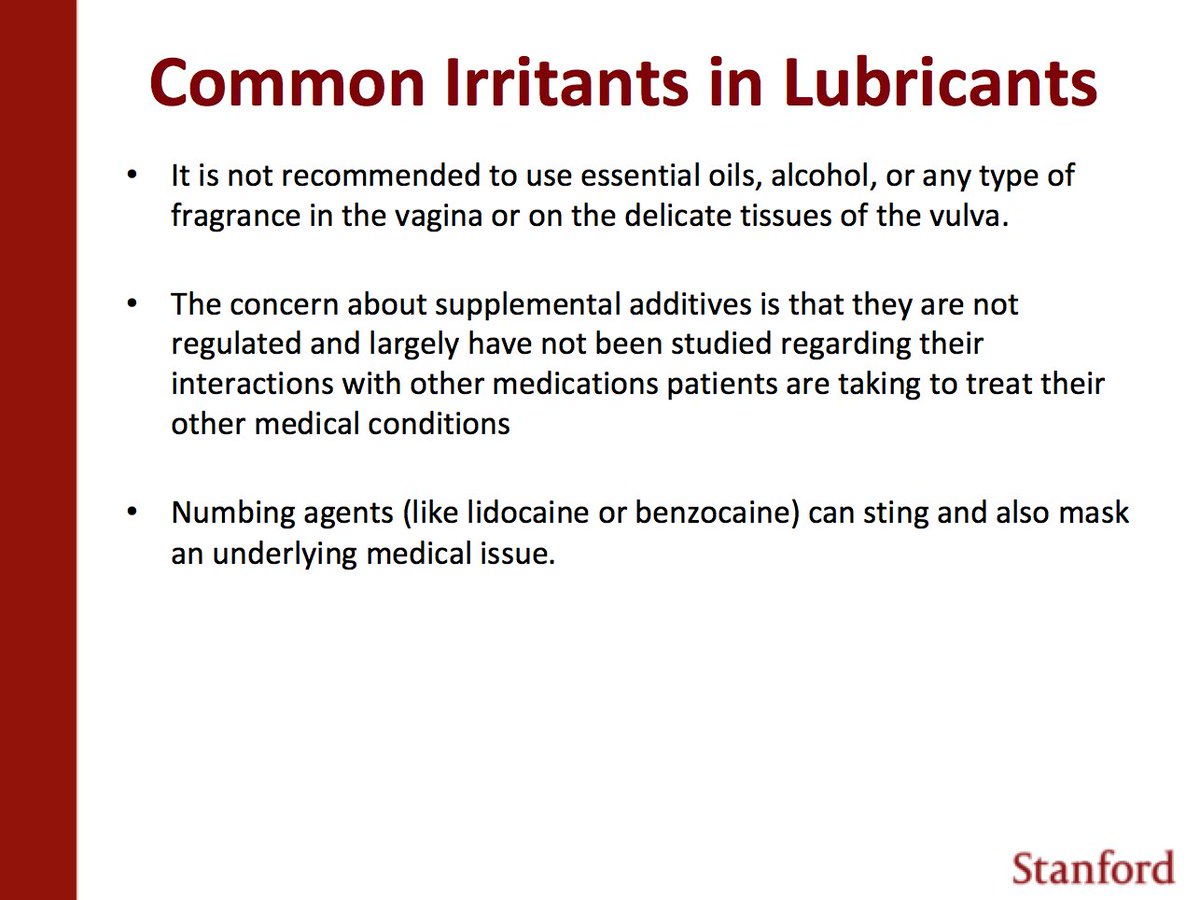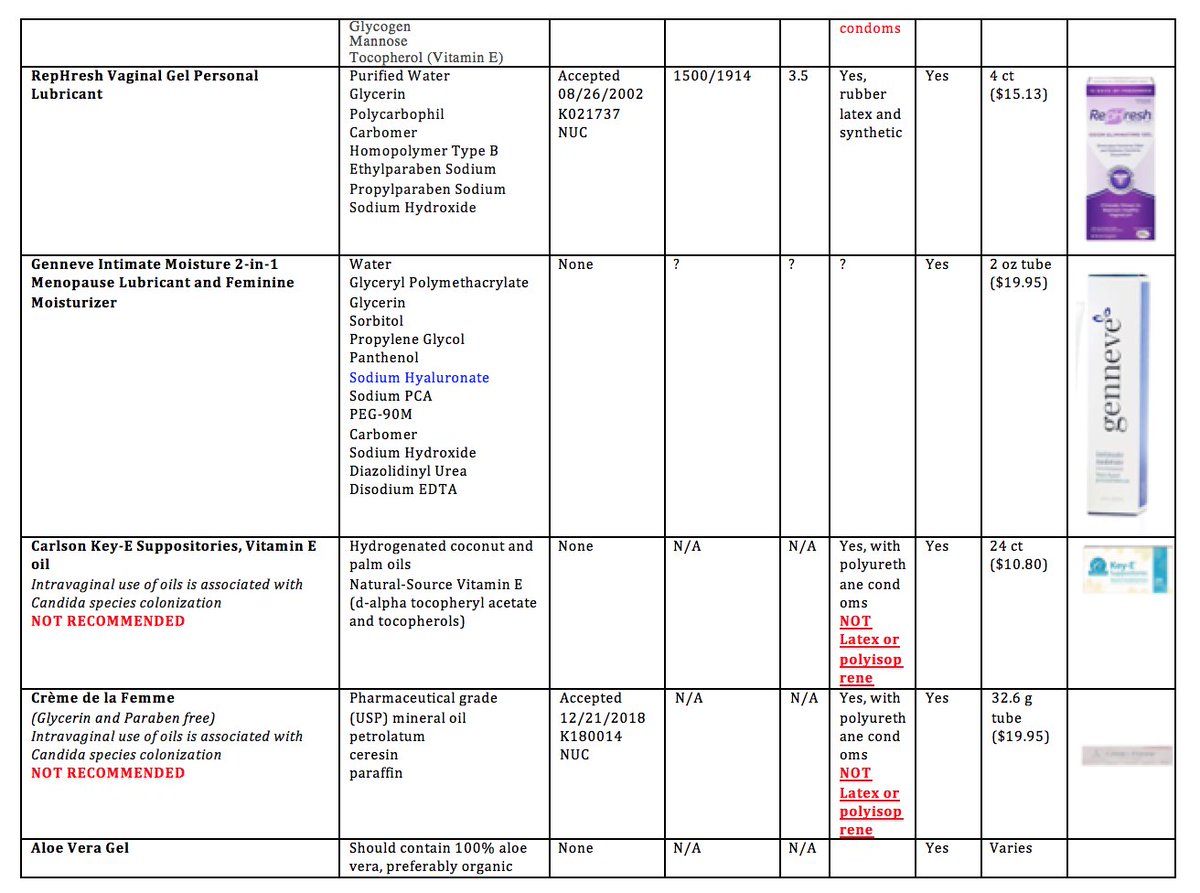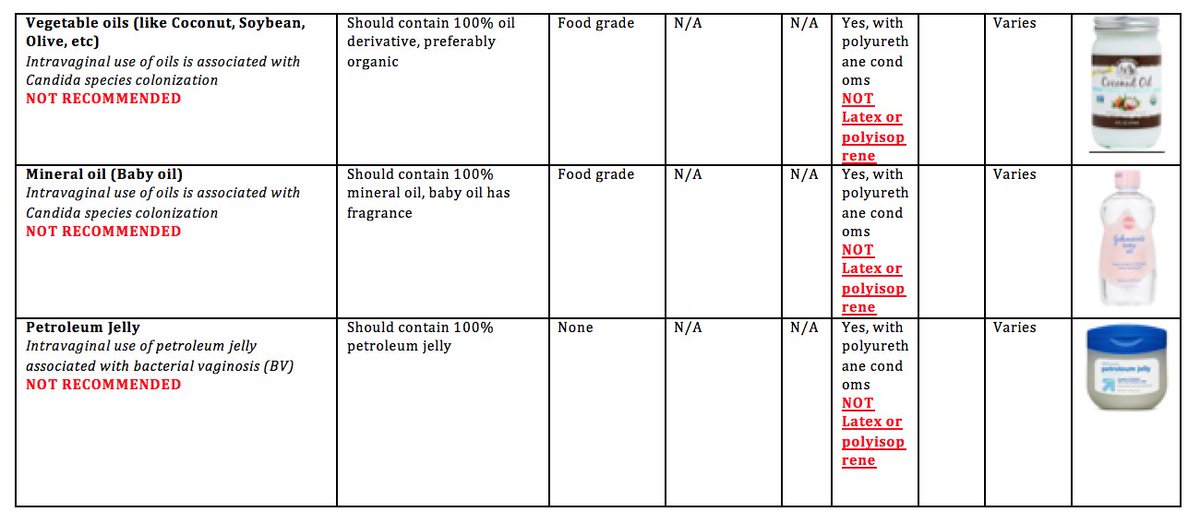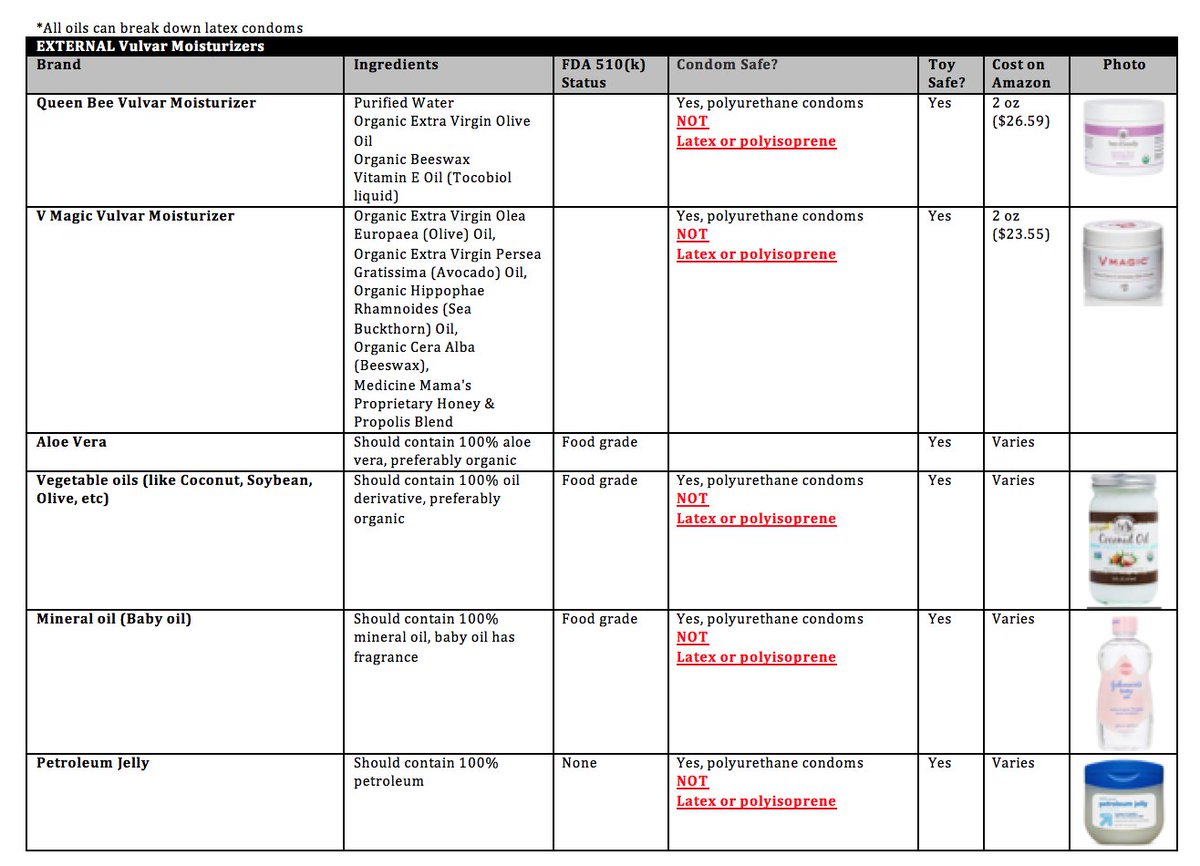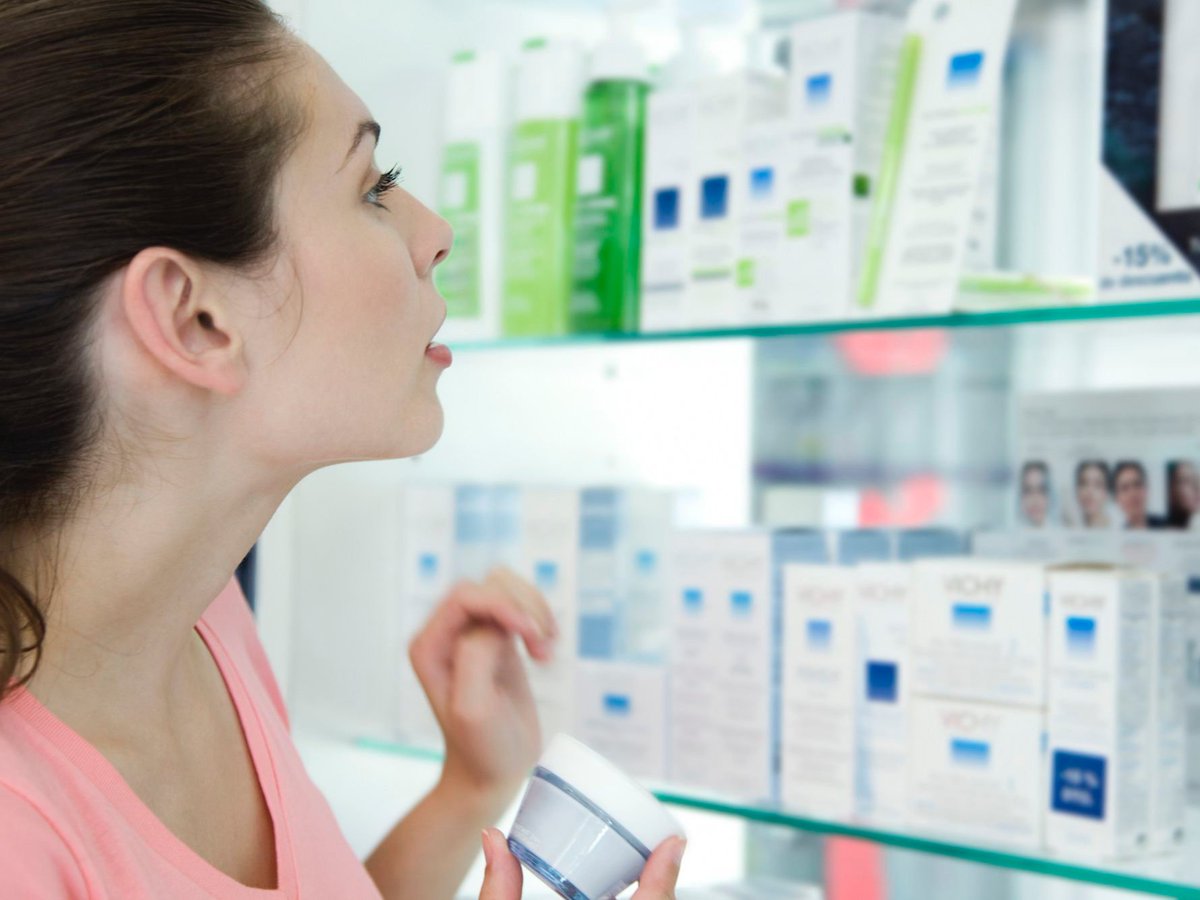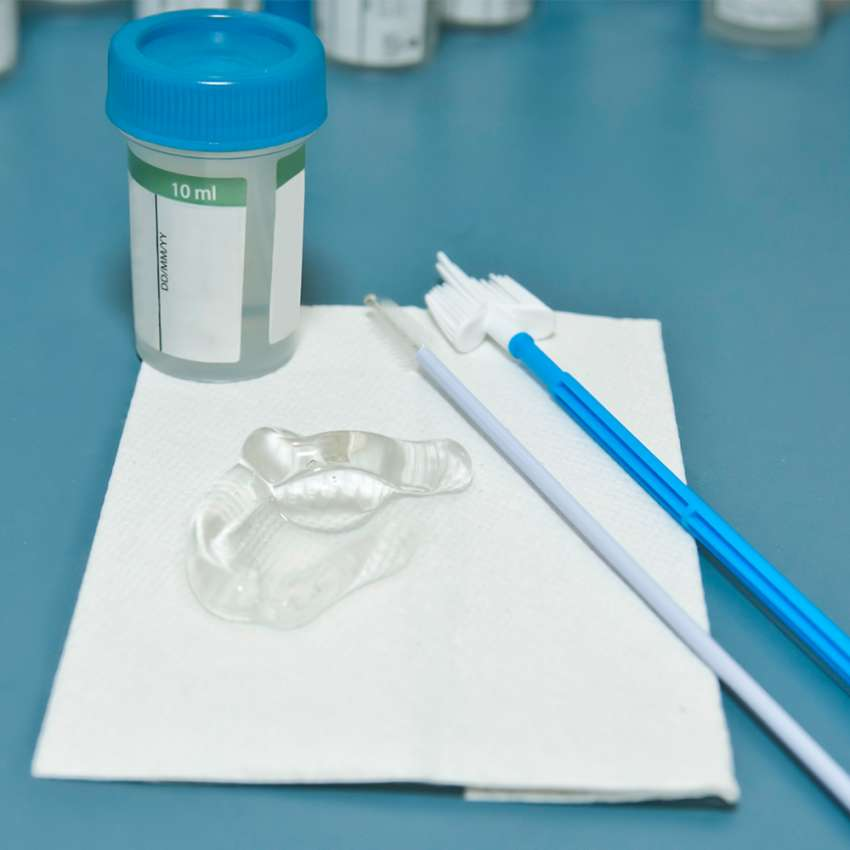1/ THREAD: Vaginal/Anal Lubricants and Moisturizers
[because Vagisil is now being predatory & targeting the teenage market with vaginal cleansers...awesome]
@DrJenGunter @MamaDoctorJones @dramypark @jfitzgeraldMD @MigsRunner @doctorjenn @DocElovitz @janevandis @WomxnsHC https://twitter.com/ErinSandersNP/status/1358087748331143170
https://twitter.com/ErinSandersNP/status/1358087748331143170
[because Vagisil is now being predatory & targeting the teenage market with vaginal cleansers...awesome]
@DrJenGunter @MamaDoctorJones @dramypark @jfitzgeraldMD @MigsRunner @doctorjenn @DocElovitz @janevandis @WomxnsHC
 https://twitter.com/ErinSandersNP/status/1358087748331143170
https://twitter.com/ErinSandersNP/status/1358087748331143170
2/ Apologize to my #COVID19 only followers, but you should really be informed of this data as well!
Vaginal lubricants >1500 mOsm/Kg (4 times level of vaginal fluid) markedly reduced epithelial barrier properties and showed damage of tissue structure. https://twitter.com/ErinSandersNP/status/1358091903766519809?s=20
Vaginal lubricants >1500 mOsm/Kg (4 times level of vaginal fluid) markedly reduced epithelial barrier properties and showed damage of tissue structure. https://twitter.com/ErinSandersNP/status/1358091903766519809?s=20
3/ @WHO recommends osmolality of a personal lubricant should not exceed 380 mOsm/kg in order to minimize any risk of epithelial damage, with maximum acceptable osmolality limit of 1200 mOsm/kg is generally deemed acceptable in practice.
@DrJenGunter @MamaDoctorJones @dramypark
@DrJenGunter @MamaDoctorJones @dramypark
4/ But what are you talking about and why do we care?
The 2 primary barriers to infection in the human vagina are:
1. An intact skin barrier AND
2. Acidity
Lubricants and other products can compromise these first lines of infection prevention!!!
@DrJenGunter @MamaDoctorJones
The 2 primary barriers to infection in the human vagina are:
1. An intact skin barrier AND
2. Acidity
Lubricants and other products can compromise these first lines of infection prevention!!!
@DrJenGunter @MamaDoctorJones
5/ A pH>4 well above protective lactic acid acidity of the healthy human vagina
- Rectal pH 7.0
- Vaginal osmolality 280 mOsm/kg
- Rectal osmolality 290 mOsm/kg
So, optimum requirements for both vaginal & rectal intercourse cannot be bridged in a single lubricant!
@DrJenGunter
- Rectal pH 7.0
- Vaginal osmolality 280 mOsm/kg
- Rectal osmolality 290 mOsm/kg
So, optimum requirements for both vaginal & rectal intercourse cannot be bridged in a single lubricant!
@DrJenGunter
6/ Again, pH of the vagina can range from 3.5 – 7 depending on cycle, infection, pre/post menopausal, etc.
- Post-menopausal women tend to have a higher pH
- Anal lubricants need a higher pH
*There is also a difference b/w lubricants and moisturizers!*
@DrJenGunter @doctorjenn
- Post-menopausal women tend to have a higher pH
- Anal lubricants need a higher pH
*There is also a difference b/w lubricants and moisturizers!*
@DrJenGunter @doctorjenn
7/ Internal and external vaginal moisturizers are designed to help with ongoing symptoms of dryness, which is primarily due to the loss of estrogen secondary to aging/surgery/medication/tx, & localized estrogen replacement is most effective. However, there are some other options:
8/ In my research, a concerning finding was the consistent use of lubricants in clinical settings that contain chlorhexidine gluconate or antiseptics despite extensive evidence of harm to the vaginal epithelium and microbiome.
@DrJenGunter @MamaDoctorJones @dramypark @doctorjenn
@DrJenGunter @MamaDoctorJones @dramypark @doctorjenn
9/ From this work, I think clinicians should sincerely re-evaluate WHAT products we are using with our patients and why. It is also important to know and educate about the risks of some of these products. I had hoped to do more research on this in the before #COVID times.
10/ For example, silicone lubricants are inert but a little more challenging to clean up. They can be used in both the vagina/anal canal safely & may be more comfortable for patients with vaginal dryness. Do they interfere with paps? Not studied. I'll link some references below

11/ Rapid fluctuation of the vaginal microbiota measured by Gram stain analysis https://sti.bmj.com/content/86/4/297
Effect of Olive and Sunflower Seed Oil on the Adult Skin Barrier: Implications for Neonatal Skin Care. https://onlinelibrary.wiley.com/action/showCitFormats?doi=10.1111%2Fj.1525-1470.2012.01865.x
Effect of Olive and Sunflower Seed Oil on the Adult Skin Barrier: Implications for Neonatal Skin Care. https://onlinelibrary.wiley.com/action/showCitFormats?doi=10.1111%2Fj.1525-1470.2012.01865.x
12/ Intravaginal Practices and Risk of Bacterial Vaginosis and Candidiasis Infection Among a Cohort of Women in the United States.
https://insights.ovid.com/pubmed?pmid=23635677
Characterization of commercially available vaginal lubricants: a safety perspective. https://www.ncbi.nlm.nih.gov/pmc/articles/PMC4190534/
https://insights.ovid.com/pubmed?pmid=23635677
Characterization of commercially available vaginal lubricants: a safety perspective. https://www.ncbi.nlm.nih.gov/pmc/articles/PMC4190534/
13/ Evaluation of the efficacy and safety of hyalurionic acid vaginal gel to ease vaginal dryness: a multicenter, randomized controlled, open-label, parallel-group, clinical trial. https://www.ncbi.nlm.nih.gov/pubmed/23574713
14/ An evaluation of over-the-counter personal lubricants for safety and anti-HIV-1 activity. https://www.ncbi.nlm.nih.gov/pmc/articles/PMC3492332/
Identification of personal lubricants that can cause rectal epithelial cell damage and enhance HIV Type 1 replication in vitro https://www.ncbi.nlm.nih.gov/pmc/articles/PMC3161103/
Identification of personal lubricants that can cause rectal epithelial cell damage and enhance HIV Type 1 replication in vitro https://www.ncbi.nlm.nih.gov/pmc/articles/PMC3161103/
15/ Treating vulvovaginal atrophy/genitourinary syndrome of menopause: how important is vaginal lubricant and moisturizer composition?
https://www.tandfonline.com/doi/full/10.3109/13697137.2015.1124259
Unique features of antiviral immune system of the vaginal mucosa. https://www.ncbi.nlm.nih.gov/pubmed/?term=Unique+features+of+antiviral+immune+system+of+the+vaginal+mucosa
https://www.tandfonline.com/doi/full/10.3109/13697137.2015.1124259
Unique features of antiviral immune system of the vaginal mucosa. https://www.ncbi.nlm.nih.gov/pubmed/?term=Unique+features+of+antiviral+immune+system+of+the+vaginal+mucosa
16/ The vulvar epithelium differs from the skin: implications for cutaneous testing to address topical vulvar exposures. https://www.ncbi.nlm.nih.gov/pubmed/?term=The+vulvar+epithelium+differs+from+the+skin%3A+implications+for+cutaneous+testing+to+address+topical+vulvar+exposures
The slippery slope: lubricant use and rectal sexually transmitted infections: a newly identified risk. https://www.ncbi.nlm.nih.gov/pmc/articles/PMC3244680/
The slippery slope: lubricant use and rectal sexually transmitted infections: a newly identified risk. https://www.ncbi.nlm.nih.gov/pmc/articles/PMC3244680/
17/ Hyperosmolar sexual lubricant causes epithelial damage in the distal colon: potential implication for HIV transmission.
https://academic.oup.com/jid/article/195/5/703/843236
Microbicide excipients can greatly increase susceptibility to genital herpes transmission in the mouse. https://www.ncbi.nlm.nih.gov/pmc/articles/PMC2996397/
https://academic.oup.com/jid/article/195/5/703/843236
Microbicide excipients can greatly increase susceptibility to genital herpes transmission in the mouse. https://www.ncbi.nlm.nih.gov/pmc/articles/PMC2996397/
18/ Use of “natural” oils for moisturization: Review of olive, coconut, and sunflower seed oil.
https://onlinelibrary.wiley.com/doi/full/10.1111/pde.13621
Anti-Inflammatory and Skin Barrier Repair Effects of Topical Application of Some Plant Oils. https://www.ncbi.nlm.nih.gov/pmc/articles/PMC5796020/
https://onlinelibrary.wiley.com/doi/full/10.1111/pde.13621
Anti-Inflammatory and Skin Barrier Repair Effects of Topical Application of Some Plant Oils. https://www.ncbi.nlm.nih.gov/pmc/articles/PMC5796020/
19/ A question for women's health: chemicals in feminine hygiene products and personal lubricants. https://www.ncbi.nlm.nih.gov/pmc/articles/PMC3948026/
Vaginal microbiome of reproductive-age women. https://www.ncbi.nlm.nih.gov/pmc/articles/PMC3063603/
Vaginal microbiome of reproductive-age women. https://www.ncbi.nlm.nih.gov/pmc/articles/PMC3063603/
20/ Mineral oil lubricants cause rapid deterioration of latex condoms. https://www.ncbi.nlm.nih.gov/pubmed/2535978
Studies Raise Questions About Safety Of Personal Lubricants
http://www.e-lactancia.org/media/papers/Studies_Raise_Questions_About_Safety_Of_Personal_Lubricants_2012.pdf
Studies Raise Questions About Safety Of Personal Lubricants
http://www.e-lactancia.org/media/papers/Studies_Raise_Questions_About_Safety_Of_Personal_Lubricants_2012.pdf
21/ “Use and procurement of additional lubricants for male and female condoms” @WHO report https://apps.who.int/iris/bitstream/handle/10665/76580/WHO_RHR_12.33_eng.pdf;jsessionid=2F9EC40FBB3104A186DDD33F8047C447?sequence=1
Hyperosmolal vaginal lubricants markedly reduce epithelial barrier properties in a three-dimensional vaginal epithelium model https://www.sciencedirect.com/science/article/pii/S221475001730118X?via%3Dihub
Hyperosmolal vaginal lubricants markedly reduce epithelial barrier properties in a three-dimensional vaginal epithelium model https://www.sciencedirect.com/science/article/pii/S221475001730118X?via%3Dihub
22/ Included slides are from a presentation I did at Stanford.
@threadreaderapp please unroll.
To read more of my threads, please check out: https://docs.google.com/spreadsheets/d/1-jqwvJ_KDQ14s-yn9hj2ysX0HAoQqOZtO9UyLhXWyeo/edit#gid=0
@threadreaderapp please unroll.
To read more of my threads, please check out: https://docs.google.com/spreadsheets/d/1-jqwvJ_KDQ14s-yn9hj2ysX0HAoQqOZtO9UyLhXWyeo/edit#gid=0

 Read on Twitter
Read on Twitter